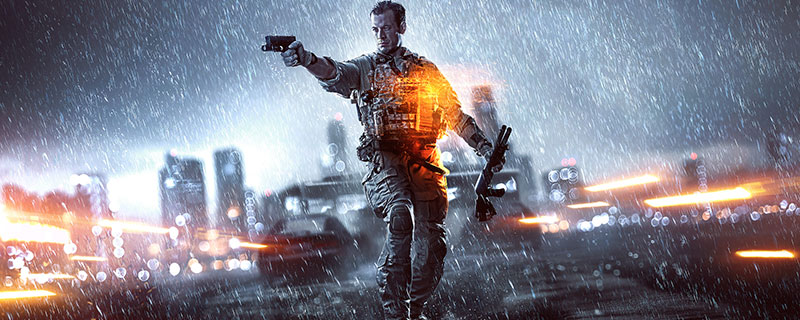
With the announcement of Battlefield V, the new entry into the storied series, we’re going to take a look today at perhaps the most beloved of the new age Battlefield games – Battlefield 4. The reason this excellent game is so interesting may perhaps be for how it came to be—that is, out of the cauldron of creation and straight into the fire. That’s right, it was released in an absolutely dreadful state… but nonetheless managed to make a complete recovery.
Battlefield 4’s was an excruciating experience for the majority of fans. There were optimization and net code issues while the servers suffered—as did we—from a low tick rate and more bugs than a rainforest at midnight. One of the most interesting issues had knocked down soldiers capable of blocking tank cannon fire and de facto act as a shield for people behind them. Another issue concerned the silencer of a certain rifle managing to mute the sound on the entire server. Add in the classical crashes and freezes galore, and broken game logic to boot and we arrive at the unequivocal conclusion: Yes, it was that bad.
It was an unwinnable, desperate situation. Every platform had issues, some more than others, but not one of them was really ready for prime time. The first patches the game received helped, if only marginally. Yes, good battles could be had if you were lucky, but that is not the auspicious situation a game’s creators would have it in. That there was clearly a decent game groaning under the weight of all these issues rendered the failures all the more frustrating.
But what caused these problems? How can a gigantic AAA first-person shooter from a veteran studio with tens of millions of dollars in development money put out such a stinker? Well, as you might suspect, it was a combination of factors. Battlefield 4 was a cross-generational title and, as such, had to work on the then new PS4 and Xbox hardware as well as be a decent experience for PS3 and Xbox 360 owners, not to mention PCs. Add to that a new engine, with Frostbite 3 making its debut. In many ways it was a similar piece of tech to Frostbite 2, true, but DICE had retooled both it and its capabilities to a massive extent, making for an even prettier, more optimized game, with some impressive environmental physics and effects. Those two things alone would break most developers, but insufficient development time and a rushed release were also to blame.
Finally, the title’s sales came in below those of Battlefield 3 and the community and critical backlash took their toll on the game’s reputation. Amid lawsuits and a seemingly failed effort, the game’s developers faced marketing a laughing stock to gamers who’d lost all trust in the Battlefield name.
That is… until it got fixed. As in fully fixed. The bugs and glitches, silly exploits and performance issues were all patched up. The netcode was improved tremendously, the tick rates were upgraded, the physics were revised and the masterpiece of a game percolating under all these problems managed to emerge. It went on to receive a crucial Community Test Server and numerous DLCs. Meanwhile, fans got involved in content creation and the helping hand of DICE LA took over, ironed out the remaining quirks and issues and made much of the later DLC free. While this tortuous process took its bloody time—over a year, in fact—Battlefield 4 was finally finished, and boy did it shine!
The effort made with Battlefield 4 was so outstanding because buggy video games rarely get fully fixed. Brand new titles are rushed out the door with a metric ton of issues. A few patches later and they become playable, if rarely polished to a satisfying degree. Of course it would be better if games were released in a good state, where no major game breaking issues or glitches exist and only tiny quirks or one-offs happen before getting fixed. But the reality is that, for one reason or another, we often get broken releases. Few as broken as Battlefield 4, true, but most do not get fully fixed.
Take this as a plea, dear developers and publishers. If a release is troubled, it pays to try and fully fix it, especially when there is a gem underneath all the muck. Gamers do notice when developers pour heart and soul into a project they like or would potentially even love–if it worked. Simply writing it off as a failed launch is easy. Taking all the money, tanking the backlash and hyping the next thing is all too easy, too. But easy rarely leads to greatness. Please, acknowledge the issues, work hard, get the job done, toss in some goodwill events or free, high-quality DLC, and people will forgive a terrible release when the quality emerges. All’s well that ends well, after all. Not only will gamers trust you more, but also respect you.
























